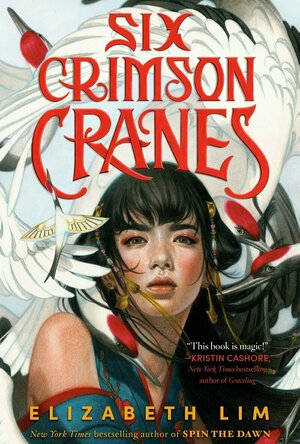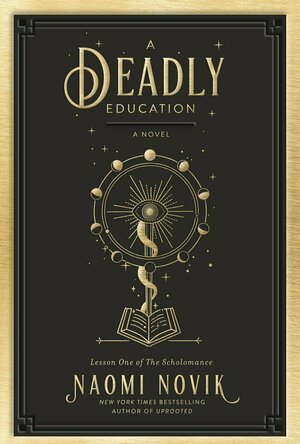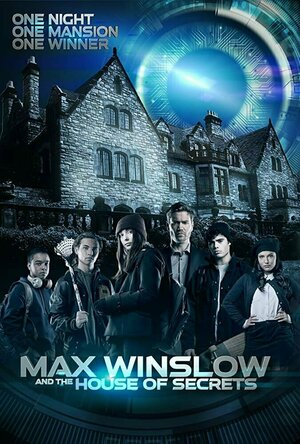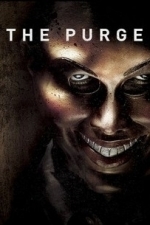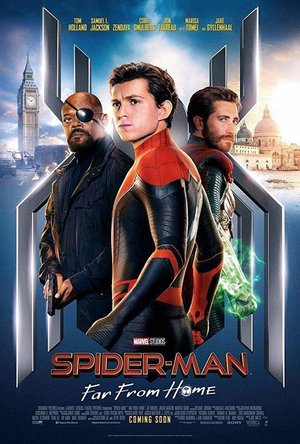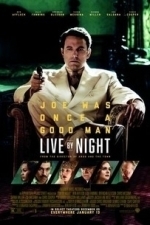Lottie disney bookworm (1056 KP) rated Six Crimson Cranes in Books
Jun 17, 2021
Where do I start?
Wow!
In a kingdom which has banned magic and banished all demons to the Holy Mountains, Princess Shiori must hide her magical blood from those around her, in particular her six brothers, her mysterious stepmother and her father, the Emperor.
However, when a combination of magic and stubbornness derails Shiori’s betrothal ceremony the princess discovers that she is not the only family member hiding their gift. After spying on her stepmother, Shiori is convinced that her father’s wife is a demon and turns to her brothers…with disastrous consequences.
With her six brothers transformed into cranes, Shiori is alone, cast far away from the palace and forced to remain mute: for every word she utters, one brother will die! She is also unrecognisable, her magic is locked and she cannot reveal her past to anyone. Powerless, abandoned and mute- can Shiori save her six older brothers and return home to defeat her stepmother?
Shiori herself is an amazing protagonist. She is young, impulsive, stubborn but also has the biggest heart. Her love for her brothers (and food) is integral to her personality and the comfort she takes in the memories of her mother is beautiful.
Initially, Shiori’s life may appear to be a fairytale with extravagant robes and magnificent palaces. Maybe that is why Lim creates a fairytale-worthy curse? With a lost voice, a lost pink slipper and a city put to sleep, Elizabeth Lim certainly showcases some of the magic we saw in her Disney Twisted Tale novels.
Shiori’s journey to save her brothers is one of tremendous bravery and courage and it is along this path that the princess truly discovers her inner strength. She also matures immensely (it’s probably inevitable when your stepmother curses you) but Shiori experiences the hardships of the world around her, learns who to trust and realises that sometimes poison (or a curse) can be a “medicine in disguise”.
The supporting cast within Six Crimson Cranes are also incredible. Seryu the dragon prince with his ruby eyes and green hair clearly cares for Shiori. Will he try to sway her affections in book two? He will have to compete with Takkan, the loyal, picture-perfect prince who protected Shiori when no-one else did, long before he knew her true identity.
Shiori’s stepmother, Raikama, was possibly the most complex character. Despite only being present at the beginning and end of the novel, she spends 90% of the book as a villain – and the reader is fully on board with this! However, Lim’s ingenious use of Shiori’s faint memories help her piece together an unfathomable puzzle: why would Raikama curse the siblings instead of killing them? Is this linked to her stepmother’s magic and her mysterious past?
The world building in Six Crimson Cranes is magical. Without breaking the flow of the novel Lim perfectly creates the kingdom of Kiata in our minds, from the manicured grounds of the palace during the Summer Festival, with kites bobbing against azure skies, to the bleak but beautiful Iro, overlooked by Rabbit mountain, glittering in the light of the silver moon. Elizabeth Lim truly transports her readers to these beautiful but dangerous landscapes.
Six Crimson Cranes is a book which surpassed all my expectations. The world building is as magical as its fairy-tale undertones and the characters already feel like old friends. I don’t think I can wait another year for the sequel!
Thank you so so much to Netgalley for providing this amazing opportunity! I received a free digital copy of this book in exchange for an honest review…and now I’m off to pre-order the real thing!
Janeeny (200 KP) rated A Deadly Education: Lesson One of the Scholomance in Books
Jun 18, 2021
It’s taken me three days to write this review, as I’ve tried to find something clever and witty to say about it when the simple truth is, I like this book and it’s hard to explain why without giving too much away.
It has all the elements you’d expect and enjoy from a fantasy novel, and even though most people I know who enjoy this genre feel it bridges the gap between YA and adult fiction, I should still probably say that the only thing that gives it away that this is a YA book is the teenage protagonist. Novik has gone with the canny technique of a YA voice and theme with an adult backdrop. (I know it’s school but I don’t think even Harry Potter had THIS many near-death experiences)
The protagonist is a girl called El who goes to a special school called The Scholomance. What makes this school so special is the fact that it’s for magically gifted children, it’s held between realities, there are no teachers, the school itself assesses your progress and provides your work accordingly. However, where there are magical beings there are beasties and there are some right nasty ones in this school. Luckily El is constantly rescued by resident hero Orion, which she is especially aggrieved by, considering that El herself is potentially the most dangerous thing in the school.
Oddly enough, one of my favourite aspects of this book was the one thing that most reviewers found annoying about it, and that’s what they’re calling the ‘info-dumping’. There’s a strong feeling amongst the reviews that there is constantly just too much information being thrown at you. In hindsight, I can see their point, and if you’re a fan of Novik and were expecting her usual standard this may be annoying. However, for me as my first foray into her style, I didn’t mind it. In fact, I think it contributed to her world-building and just made me even keener to read the next book. Maybe now that the base is established the next book won’t have so much of it, but it didn’t detract from the story at all for me. I can’t help it, I like information. Sure if a bunch of schoolroom chairs have just come to life and chased after our main characters I want to know how that turns out as quickly as possible, but I do also like to know why.
There is so much going on here, that not only is Novik giving you an entertaining story but it feels like she’s laying the groundwork for what could be (hopefully) an epic new series. El is at times annoying and frustrating, but refreshingly consistent. Orion is the reluctant hero, despite being provided with a bit of background for him he still feels a little 2 dimensional to me, but I hope he’ll be fleshed out a bit more in the next book. They are supported by a range of diverse characters, speaking of which . . .
I’d be remiss if I didn’t mention the controversy around the book regarding some racist claims. I am by no means qualified to comment on this point, but what I would say is that the issue is a sin of omission rather than intention, and has been addressed by the author. If this is an issue that has you reconsidering adding this to your TBR pile, please do read a broad selection of reviews before making up your mind. As it is a fantastic book and could potentially be my favourite new series
Emma @ The Movies (1786 KP) rated Max Winslow and the House of Secrets (2019) in Movies
Oct 23, 2020
A challenge is issued, a competition that will see the mansion of tech billionaire Atticus Virtue gifted to the lucky winner. Chosen from his old school, five pupils enter to compete for the prize. As the evening goes on the games become increasingly dangerous and they find themselves fighting back against an advanced AI who's out to get them.
Max Winslow And The House Of Secrets feels like the kind of hybrid you'd get from crossing Willy Wonka with Ready Player One. All three films have the same sort of idea to them but convey it in their own quirky ways.
The story isn't the only classic idea the film capitalises on, we've also got your stereotypical group of teens thrown together end up having to work together to solve their problems. As they're introduced to us there was a little eye-roll on my part... we've got the computer nerd, the jock/musician, the social media icon, the gamer and the bully... but despite that eye-roll I quickly got over it as we progressed further in.
All these characters actually give us quite a well-balanced film, their introductions were handled quickly and clearly so it doesn't feel like a slog meeting them all, and jumping between characters/scene helps move the action along and keep you interested.
The acting from the younger members of the cast is pretty good when they're thrown in together, they all work well together and in scenes that could quite easily have become a little cheesy they manage to keep it quite sensible. We're treated to Marina Sirtis playing the AI running the mansion, I was amused by this casting, I don't think my brain could quite comprehend her in this role. The mansion's eccentric owner is played by Chad Michael Murray, I wish I could be a little more excited about him in this film but his brief appearances didn't rate highly with me. There weren't many moments when he was on screen where his performances weren't slightly awkward, at one point it felt like a script issue, but either way I was pleased that the main focus was one the younger actors.
Eye-rolling early on felt like it was becoming a habit, as the main storyline began it happened again. A moment occurs and you know that the information is going to be relevant later, you don't have to wait too long for an initial pay off to it either. I was worried that this would mean the ending of the film would be ruined but the pace from switching up between characters helps to drag you away from it.
Something I was a little surprised about was the tone of some of the scenes. When you start to watch the film it feels very much like a made for TV (that's not a negative comment, you know I love my made for TV movies!) family adventure affair, but some scenes are actually a little darker than would happily fit in that sort of film. Sitting at a 12A seems like the right level, had it been sanitised for younger viewers I think we'd have been left with something too tame to be good. (You could have pushed it further into the 15 and up area, but that would have put it in Escape Room territory and I'm not entirely sure we need more of that.)
Despite my eye-rolling and (many) unanswered questions that come from an adult watching a film not entirely made for them, I really enjoyed Max Winslow And The House Of Secrets. It's a fun watch, with some surprising little additions.
Originally posted on: https://emmaatthemovies.blogspot.com/2020/10/max-winslow-and-house-of-secrets-movie.html
Jesters_folly (230 KP) rated The Purge (2013) in Movies
Jan 28, 2021
1) We have the purge itself, a new political party has come in and started titular Purge, one night a year where any crime is legal (although the emphasis is on killing and, via subtext, rape). There are a few exceptions stated at the start of the film and, although it's not directly stated, it seems that minors are exempt, in that they can be targets but not actually participate in the killing.
2)The 'Boyfriend' subplot. This could have led to the main plot but seems to be there just to keep us off track at the beginning.
3) The bloody stranger - ok he's needed as he's the main McGuffin
4) The Freaks, Yes the film needs it's antagonists and it's sometimes good to throw in a red herring but we have; The Freaks, Henry (the boy friend), The Bloody stranger who is suspected as being dangerous when he first arrives, even Janes Sandin looks like he could be the antagonist when he is going to throw the stranger out of the house, then we have...
5) The neighbours - even from the start of the film there is something off about them.
6) Add all of this together with a lot of politics and you have a very layered film.
The first half of the film is mainly set up, setting up the idea of the purge and introducing the characters, there are a few shots of violence in the beginning but the film starts off slow. Then it explodes in violence.
Although the concept is the same, The Purge is a different beast to something like 'The Strangers', both films spend time building up to the the action but, when the action starts, the Purge is much faster paced, mainly because there are more 'hunters' and they have guns.
The Purge is also a very political film but it doesn't go down the 'rich vs poor' root that a lot of films do, this is mentioned a bit but only to back up the thinking behind some of those who partake in the event. The film shows two sides of the Purge and mentions two more, you have those that want to take part in the event and those (like the main family) who don't, the Sandin's just want to get through the night where as the 'Freaks' happily take part in it. It's also mentioned that there are those who can not protect themselves (the poor) and those that object.
After watching it I am left with two questions:
1) what happened to Henrys body? We last saw it in Zoey's room, no one mentioned moving it and it couldn't have been taken out of the house but it was never seen when the Freaks were going room to room, they even went into the room where it should have been.
2) were the cookies poisoned? The neighbour said they saw the shutters come down (pulled off) and decided to take the opportunity to kill the Sandins but the hatred was already there so could the cookies have been another way to kill them off. It's true that they would have had to have been cooked before the purge officially started but, going by when they given, they would not have been eaten until either a few minuets before the start or after it had started and I doubt that anyone official would pay too much attention to the bodies after the purge. There would be too many even if they wanted too.
Gareth von Kallenbach (980 KP) rated Spider-Man: Far From Home (2019) in Movies
Jun 27, 2019 (Updated Jun 28, 2019)
As such; Peter is looking forward to a European trip as not only is his friend Ned (Jacob Batalon) coming along; but Peter also wants to use this trip to get closer to MJ (Zendaya) and express his feelings for her.
While the early part of the trip starts off as you would expect for a bunch of teens experiencing Venice for the first time; Peter soon finds himself struggling to save the day and keep his alter ego a secret when a dangerous Elemental creature attacks the city.
With the help of a powered individual named Mysterio (Jake Gyllenhaal); Peter is able to stop the attack but with the arrival of Maria Hill (Colbie Smulders), and Nick Fury (Samuel L. Jackson), Peter learns that there are bigger attacks on the way and that his skills are being pressed into service for the greater good.
This causes a great deal of conflict for Peter as after his recent experiences with the Avengers; he simply wants to enjoy a vacation as a 16 year old and feels that he needs time to have a life and recover from his recent ordeals.
As if this was not enough to deal with; Peter has also been entrusted with an unexpected gift which gives him access to new technology but also comes with a heavy sense of responsibility that forces him to question if he is truly up to the expectations that have been put upon him by Fury and society as a whole.
While Peter and Fury attempt to balance the delicate situation to their mutual advantage; a shocking turn of events happens, forcing Peter to step up and risk everything to save his friends and the public from a much larger threat than he imagined.
The film is a dynamic thrill ride that in a summer that has largely been filled with disappointments following “Avengers: Endgame”; delivers the goods.
The cast is great and the film mixes the action and humor of the character well as we get everything that fans have come to expect from the series.
The visuals are amazing and the audience was cheering for the twistingly nimble and gravity defying moves of the title character as well as laughing at the surprising amount of humor that is in the film which supports the action sequences well.
Holland truly owns the role as he encompasses the duality and conflict of the character so well. For all the quips and bravado Spider-man has; he is still an awkward and confused teen who deals with everyday issues despite having tremendous abilities and lives in a world filled with dangers most could never fathom.
The supporting cast is amazingly strong and it was so nice to see Jon Favreau back as Happy as he works so well within the Marvel Universe. There are two bonus scenes in the credits and rather than act as a bit of fun filler, they are filled with many surprise moments and cameos which not only delight; but setup some very interesting consequences and opportunities down the road when Phase 4 of the Marvel Cinematic Universe resumes.
5 stars out of 5
http://sknr.net/2019/06/27/spider-man-far-from-home/
Gareth von Kallenbach (980 KP) rated Live By Night (2017) in Movies
Jul 12, 2019
Live by Night is an uninspired mess, from voice-over laden start to disastrously predictable end, bringing nothing new or exciting to the table. Beat for beat, its weak script moves from one sigh-inducing cliché to another, reaching clumsily for moments of high emotion that ring hollow and false. If anyone needs any further proof that Matt Damon did all the heavy lifting on the script for Good Will Hunting, they need look no further. It feels wrong to come down so hard on Affleck after his back-to-back successes as a director, but this is more akin to the first work of a blundering novice, and also certainly not what we’ve come to expect of a Dennis Lehane adaptation (see Mystic River, Shutter Island and Affleck’s own incredible directorial debut, Gone Baby Gone). His decision to wear so many hats on this project, producing, directing, sole screenwriter and lead actor, has to be the reason for this stumble. The script desperately needed another set of eyes and the part of Joe Coughlin was clearly written for someone younger and more capable of performing with the subtlety needed to play someone who has to traverse the number of moral dilemmas he’s faced with. Hopefully, this inevitable failure will be what convinces Affleck that his place should be behind the camera directing other people’s scripts and guiding other people’s performances.
Speaking of the performances, there is a massive curve in this collection of acting that swings wildly from the cartoonish to the nuanced. To start with, we have Matthew Maher as a KKK member out for his cut and Robert Glenister as an Irish mob boss, both of whom are supposed to be playing dangerous and threatening but can’t do any better than laughable and two-dimensional. Then there’s Chris Messina and Affleck himself as the hoods on the rise, their chemistry is ill-advised at best as they both seem to think they’re in a buddy comedy as opposed to a serious piece of gangster melodrama A favorite of mine, Brendan Gleeson, sadly leaves the screen within the first twenty minutes and that left me with only the inimitable Chris Cooper to look forward to. The subplot involving him and Elle Fanning, as his born-again daughter speaking out against Coughlin’s sinful ways is not without problems of its own, but at least they sell it. That should be no surprise on Cooper’s part, but now between this and The Neon Demon last summer; Fanning is firmly on my radar as one to watch. My hope was that we were going to get some tremendous battle of wills between her and Affleck’s character akin to Paul Dano and Daniel Day-Lewis’ conflict in There Will Be Blood, but that was definitely asking too much. Fanning’s role, like Gleeson’s, is unfortunately cut short just as it gets good.
I guess The Untouchables is starting to sound less like a guilty pleasure and more like a masterpiece when compared to this regrettable misfire.
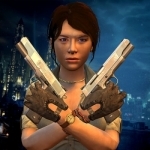
Secret Agents Spy Mission 3D -Covert Escape Action
Games and Entertainment
App
A fierce police vs secret agent and mafia vs crime swat spy mission game where kill or to be killed...

NOAA Weather Alerts
Weather and Travel
App
A simple yet powerful app that combines science with simplicity so you can be notified of real-time...

BlitzAlarm - Gewitterwarnung von nowcast
Weather and Sports
App
"Is there a storm coming my way? Am I in danger?" ThundAlert gives you the answer! With forecast...

Solar Alert: Protect your Life
Weather and Education
App
Solar Alert is the complete alert system whose purpose is to protect your life and warn you of the...
